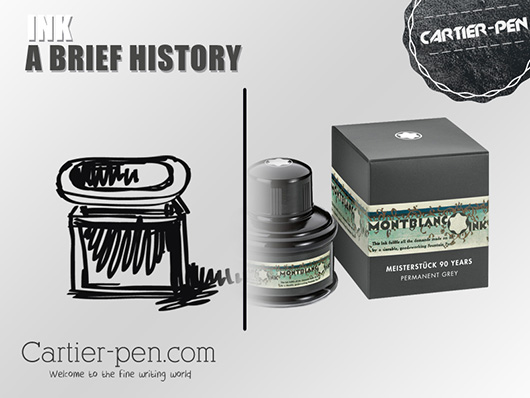Ink, A drug! Vladimir Nabokov said it right. And we have been consuming it endlessly. Three letters, Ink – Minute but captivating! The daily use of ink has caused its impact on our lives to go unnoticed. Nonetheless, the fact that it has left a mark on world history and present can barely be denied. Its ironical, the ink that has been used from recording ancient manuscripts to printing latest of writings, has no definitive history of its evolution. It starts from the age when people commenced using the ink to paint on the stones and walls of the cave.
A liquid or a paste consisting of pigments or dyes that colors any surface by the help of a writing instrument to create images and texts – that’s how Ink is defined. From simple to complex solutions, Ink serves many purposes.
Apart from color and use, the ink that we get today in the market has a very little in common with the ink that was once used by our ancestors. However the universal and ever prevailing love for inks and writing makes buying ink a conscientious part of our stationary shopping. There are countless retailers that provide you a wide assortment of inks. The one that we have browsed the most is the ink section of Pen Boutique, a Maryland based Pens, Ink and stationary store that offer everything from popular to vintage for both starters and collectors.
With time, various ancient cultures scattered all over independently used their very own recipes to formulate ink. Chinese developed water based ink and solid ink around 23rd century using plant dyes and animal glue. The Egyptians used soot, graphite and other carbon particles to create ink around 2500BC. The Chinese ink was also similar to India ink often referred to as masi which played a vital role in the compilation of not only Indian manuscripts but also Buddhist scripts during the 4th century BC. Masi was made from tar, burnt bones and pitch. Around the first century, Egyptians came ahead with papyrus plant scrolls that highlighted the art of writing and the use of inks.
Another popular ink which made it to the viable triumph was the recipe created out of mixing tannin, gallnuts with a thickener. The writings that made use of this recipe are brown in color now, but it was bluish black when it was actually put on paper. The duration from 5th century to 15th century witnessed the maximum use of carbon inks and iron gall inks that were invented in Medieval Europe. The writing platforms changed and so did the writing devices. The quill pens and the first fountain pens were created out of necessitate to make the proper and optimum use of the writing mediums that was evolving each day.
The breakthrough was when Johannes Gutenburg invented an oil based ink in the 15th century. Compared to the water based inks that were used from the earliest of times in China, the oil based ink was more suitable for printing. It quickly overshadowed the Greek and Roman Inks prevalent at that time. Some inks and dyes were invented accidentally but for good. Like in 1856, William Perkin, an English chemist discovered synthetic dyes while struggling to hit upon a cure for malaria.
Ink by ink, many new recipes were formulated, many were modified and many vanished. Secret inks, invisible inks that became perceptible under heat or chemicals held fascination whilst it added a new dimension to the ink world. In the 19th century, various artists collectively agreed upon the use of four colors CMYK used for printing. Ink, simple yet so complicated process; it’s now in every fountain pen, every ballpoint pen, and every packet in the market, in the books and even on human skin. Ink is everywhere.

